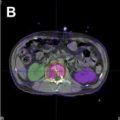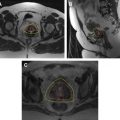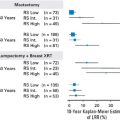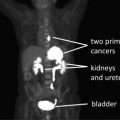
This issue is divided into 12 articles. Each article is written by expert radiation oncologists with extensive subspecialty experience and a record of effective collaboration with their surgical colleagues.
Dr Gunderson and colleagues first provide the context of the theme of this issue: the optimal integration of radiation therapy with surgery. This includes a thorough discussion of the principles, as well as illustrations of this integration, and a perspective of intraoperative radiation therapy, a therapy that truly forges the close collaboration of surgeons and radiation oncologists in the operating room.
In the second article, Dr Kirsch and associates thoroughly portray the complementary yet changing roles of radiation therapy and surgery in the management of patients with soft tissue sarcomas. There is a perspective of the important role of reconstructive surgery in the multimodality management of these challenging malignancies.
One of the more recent developments in radiation oncology is radiosurgery and stereotactic body radiation therapy (SBRT). Drs Kirkpatrick, Yin, and Sampson carefully examine the role of radiosurgery in the management of patients with cranial metastases. With increased experience and technological advances spurred by cranial radiosurgery, investigators have applied these principles and techniques to thoracic and abdominal malignancies. Drs Kelsey and Salama outline the techniques and the promising experience of SBRT in the treatment of patients with primary and metastatic lung malignancies. In selected patients, this technique provides potentially curative outcomes and is a viable alternative to surgery.
Facilitated by CT, MRI, and PET-CT imaging and impressive technical innovations in radiation therapy planning and administration, there has been substantive progress in brachytherapy for patients with prostate and gynecologic cancer. Brachytherapy has many clinical and practical advantages: an enhanced therapeutic ratio, lower cost, and enhanced convenience to patients and providers. Drs Koontz and Lee provide an excellent discussion of current clinical practices in prostate cancer as do Drs Chino and Secord in gynecologic cancers.
Over the past 20 years, there have been significant gains in the multimodality treatment of patients with localized gastrointestinal cancer. These gains have been achieved by technical advances in surgery, new cytotoxic and targeted systemic agents, and the effective integration of radiation therapy into these treatment plans. The articles by Drs Pretz, Wo, Mamon, Kachnic, and Hong in upper abdominal gastrointestinal cancers and Drs Meyer and Czito in lower gastrointestinal malignancies highlight these approaches and importantly emphasize the controversies in contemporary and future treatment strategies. In an interesting article, Dr Dewhirst and colleagues describe an innovative and cutting edge approach of thermal ablation and heat-sensitive liposomes in the treatment of patients with hepatic malignancies.
For decades, breast cancer and head and neck cancer have been managed jointly by surgeons and radiation oncologists. This collaboration is as relevant today as earlier and is increasingly based on enhanced understanding of the biology and natural history of these malignancies and facilitated by technical advances in imaging and treatment. In this setting, Drs Blitzblau and Horton describe the changing role of postoperative radiation therapy in the management of breast cancer. Drs Cabrera, Yoo, and Brizel outline the therapeutic gains in head and neck cancer patients by modern radiation therapy and imaging, and the important role of viral status on the outcome of patients with oral pharyngeal cancer.
Finally, Drs Rosenberg and Tepper conclude with an excellent overview of the innovations of radiation therapy and their relevance to surgeons. They look positively and critically to future approaches, as well as investigative opportunities.
I would like to thank the authors for their thoughtful contributions to this issue of Surgical Oncology Clinics of North America , as well as Dr Nicholas Petrelli for providing us with this unique opportunity.
Stay updated, free articles. Join our Telegram channel

Full access? Get Clinical Tree








